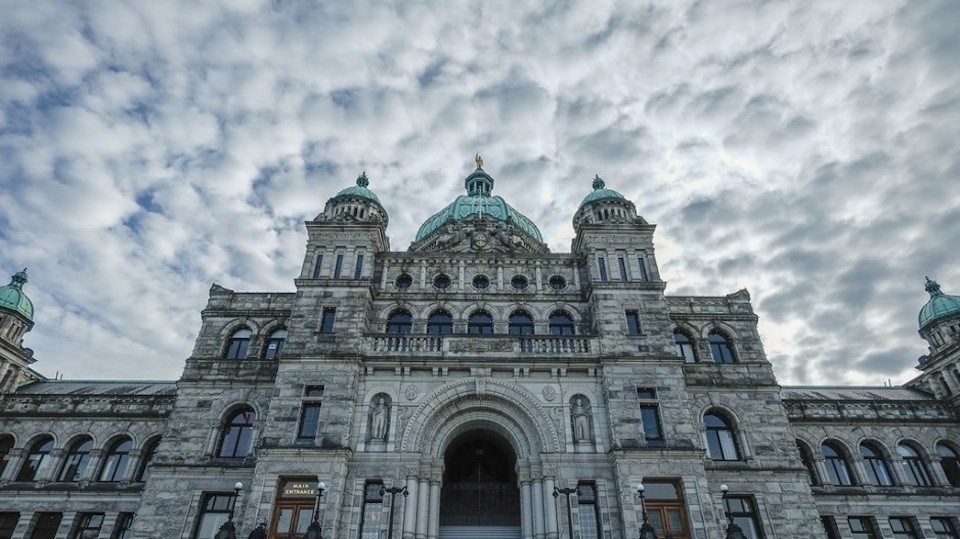Everything is awesome. The Canadian economic overview in this year’s federal budget stated that Canada's economy is now 103 per cent the size it was before the pandemic, and that we had the second strongest (always the bridesmaid) recovery in the G7.
It goes on to say that we have the strongest labour market we’ve had in several decades. More Canadians have “good middle-class jobs than before the pandemic, with many also benefiting from stronger wage growth, particularly among lower-wage workers.
And yet, everything doesn’t seem awesome. Our economy has recovered from the pandemic. We’ve never been more or better employed, but nowhere in this economic outlook does it talk about our mental health, the number of people without homes, the cost of climate change and the number of people without a primary care provider.
This is the inherent and tragic weakness built into the economic model we use to measure the health of our economy. Gross domestic product (GDP) is the total monetary value of finished goods and services produced in our country in a specific time period. It measures market value. It doesn’t account for other values like human and environmental health, which tells us a different story about how well Canada is doing. A growing GDP may indicate a thriving market economy, but it does not tell us anything about the quality of life, happiness, social and cultural well-being, and sense of belonging of this country’s citizens.
If what we measure is what we get, then it’s time we start using a new set of metrics to define our collective success. Well-being should be placed at the centre of government decision-making.
Thankfully, we don’t have to start from scratch in developing the framework. We can look to the innovative work in our own province. The British Columbia Assembly of First Nations created their plan for moving away from GDP, . The gives a comprehensive assessment on the state of the economy in Greater Victoria, and the Vancouver Economic Commission has . Other jurisdictions around the world, including New Zealand, have launched well-being budgets that prioritize the country’s overall well-being in their decisions rather than just focusing on what we know is not sustainable: The story of endless economic growth.
The goal of the New Zealand well-being budget was to improve the living standards and well-being of citizens through targeted investments in five well-being priorities: Improving mental health, reducing child poverty, supporting Maori and Pacific peoples, creating a sustainable environment and building strong communities. The well-being budget is a significant departure from New Zealand’s traditional budgeting practices and represents a long-term commitment to putting the well-being of New Zealanders at the centre of government decision-making.
Scotland is another country that has embraced well-being as a guiding principle for government decision-making. In 2017, the Scottish government published a National Performance Framework (NPF) that set out a vision for Scotland as a country where people can thrive and reach their full potential. The framework includes a set of national outcomes that focus on well-being, such as strong relationships, healthy lives and resilient communities. This is another transformational approach to policy-making that prioritizes the well-being of citizens and the environment.
The NPF includes a wide range of outcomes, from reducing child poverty to improving air quality, and is supported by a series of indicators that measure progress towards these outcomes. The framework also recognizes the interconnectedness of these outcomes and the need for a holistic approach to well-being that considers the impact of policy decisions on different parts of society.
Scotland’s well-being legislation is unique in its commitment to environmental sustainability. It aims to protect and enhance Scotland’s natural resources, reduce greenhouse gas emissions and promote the use of renewable energy. It recognizes the important role that a healthy environment plays in supporting well-being and the need to tackle the root causes of environmental degradation.
Economist Mariana Mazzucato said of Scotland’s well-being economy: “It is an innovative and forward-thinking approach to economic policy. By prioritizing the well-being of people and the environment, it has the potential to create a more sustainable, equitable and prosperous society.”
We have every opportunity in this province to create a society where all of these are true: Everybody’s needs are met; we create the conditions necessary to thrive; communities are connected, vibrant and safe; our natural systems are healthy and resilient; and our government and institutions are trustworthy and accountable.
It takes courage to make this kind of transformational change. In a province that measures its success by how much of its resources have been extracted and sold, with few proceeds going to its communities. Change is going to take political will like we have never seen before. Unless our leadership shows this courage, we will continue to see the same outcomes in public health, the environment, our reliance on fossil fuels and a loss of trust.
Everything can be awesome, but we need to agree on better goals if we’re going to get there.
Sonia Furstenau is leader of the BC Green Party and MLA for Cowichan Valley.




